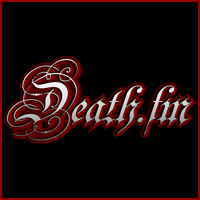Gothic rock, often simply referred to as Goth, emerged in the late 1970s and early 1980s from the post-punk scene, particularly in the United Kingdom. This genre is characterized by its dark, melancholic atmosphere, introspective lyrics, and a distinctive aesthetic that often includes elements of horror and the supernatural. The music typically features slow to mid-tempo rhythms, with a heavy emphasis on minor keys and dissonant chords. Guitar work in Goth is often atmospheric, using effects like reverb and delay to create a sense of spaciousness and depth.
The lyrical themes in Goth are deeply introspective and often explore the darker aspects of human experience, including death, loss, love, and existential angst. Bands like The Cure, Siouxsie and the Banshees, and Bauhaus were among the pioneers of this genre, setting the stage for its development and evolution. The Cure, in particular, with their albums "Pornography" and "Disintegration," showcased a blend of haunting melodies and raw emotional intensity that became a hallmark of the Goth sound.
The visual aesthetic of Goth is equally important to the music itself. Fashion often includes black clothing, dramatic makeup, and accessories like crucifixes and pentagrams. This look is meant to evoke a sense of mystery and otherworldliness, aligning with the lyrical themes of the music. The gothic subculture extends beyond music into literature, art, and film, creating a rich tapestry of dark romanticism.
One of the key aspects of Goth is its emphasis on authenticity and emotional honesty. Artists often delve deep into personal experiences and psychological states, creating music that resonates with listeners who feel marginalized or misunderstood. This emotional depth has made Goth a enduring genre, with new bands and artists continually emerging to keep the tradition alive.
The influence of Goth can be seen in various other genres, including industrial, dark wave, and even some forms of metal. Bands like The Sisters of Mercy and Fields of the Nephilim expanded on the original Goth sound, incorporating elements of heavy metal and industrial music to create a heavier, more aggressive style. This evolution has kept Goth relevant and dynamic, appealing to new generations of listeners.
In the 1990s, Goth experienced a resurgence with bands like Marilyn Manson and Nine Inch Nails bringing elements of Goth into mainstream popular culture. While these artists incorporated other genres into their sound, they retained the dark, introspective themes that are central to Goth. This period also saw the rise of the "gothic metal" subgenre, which combined the atmospheric qualities of Goth with the heavier sounds of metal.
Today, Goth continues to thrive, with a diverse range of bands and artists carrying on the tradition. From the ethereal soundscapes of bands like Dead Can Dance to the raw, emotional intensity of groups like The Birthday Massacre, Goth remains a vibrant and evolving genre. Its ability to explore the darker aspects of human experience in a deeply personal and authentic way ensures that it will continue to resonate with listeners for years to come.
The gothic subculture also includes various offshoots and related movements, such as cyber-goth, which blends elements of Goth with futuristic and technological themes. This diversity within the genre reflects its ability to adapt and evolve while maintaining its core values of emotional honesty and dark romanticism.
In conclusion, Goth is a rich and complex genre that encompasses music, fashion, literature, and art. Its emphasis on introspection, emotional depth, and a distinctive aesthetic has made it a enduring presence in popular culture. From its post-punk roots to its influence on modern metal and industrial music, Goth continues to inspire new generations of artists and listeners alike.
 Death.FMDeath.FM
Death.FMDeath.FM 1.2k
United States, Richmond VA Goth 128 kbps MP3
1.2k
United States, Richmond VA Goth 128 kbps MP3 816
816
 1
Goth
1
Goth Finland, Helsinki Goth
Finland, Helsinki Goth